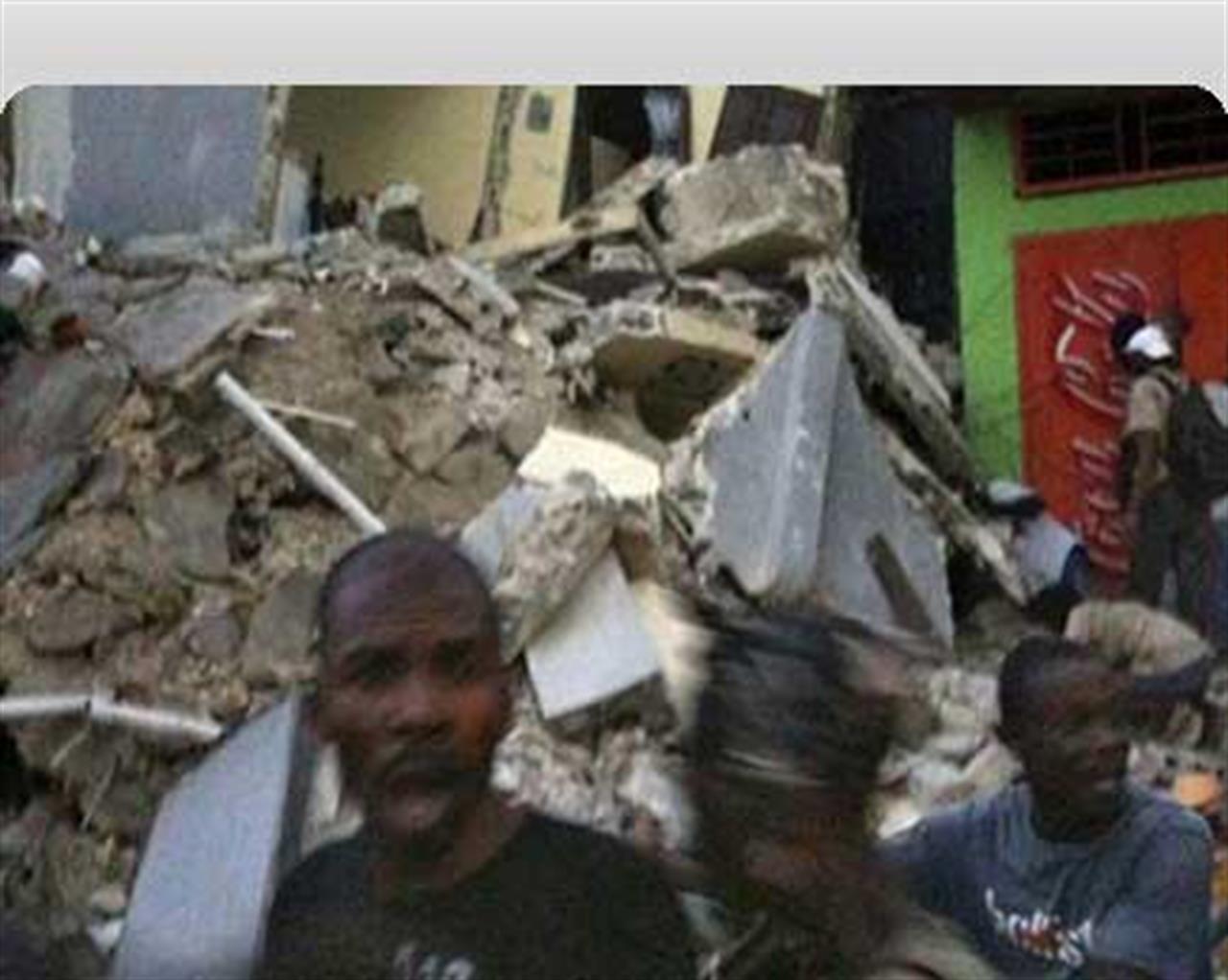Non profit
Earthquake strikes Haiti’s capital
With hundreds, possibly thousands trapped under rubble
di Staff

A major earthquake struck the capital of impoverished Haiti on Tuesday, toppling many buildings and burying hundreds, possibly thousands, of people under the rubble, witnesses said.
The magnitude 7.0 quake, whose epicenter was inland and only 10 miles (16 km) from Port-au-Prince, sent panic-stricken people into the streets as clouds of dust and smoke from falling buildings rose into the sky.
As offices, hotels, houses and shops collapsed, people were screaming “Jesus, Jesus” and running in all directions. The gleaming white presidential palace lay in ruins, its domes fallen on top of flattened walls.
Bloodied and dazed survivors gathered in the open and corpses were pinned by debris. Numerous powerful aftershocks rattled Port-au-Prince into the night.
The United Nations said a large number of its personnel in Haiti were unaccounted for after a five-story building at the headquarters of the U.N. mission collapsed.
“The whole city is in darkness. You have thousands of people sitting in the streets with nowhere to go,” said Rachmani Domersant, an operations manager with the Food for the Poor charity. “There are people running, crying, screaming.”
In the hillside neighborhood of Petionville, Domersant said he saw no police or rescue vehicles.
“People are trying to dig victims out with flashlights,” he said. “I think hundreds of casualties would be a serious understatement.”
Witnesses said they saw homes and shanties built on hillsides come tumbling down as the earth shook.
“The car was bouncing off the ground,” Domersant said.
U.N. officials said normal communications had been cut off and the only way to talk with people on the ground was via satellite phone. Roads were blocked by rubble.
Haiti is the poorest country in the Western Hemisphere and has a history of destructive natural disasters. Some 9,000 U.N. police and troops are stationed there to maintain order.
The quake prompted a tsunami watch for parts of the Caribbean but this was later canceled.
U.S. PROMISES HELP
U.S. President Barack Obama said his “thoughts and prayers” were with the people of Haiti and pledged immediate aid.
The United States would provide military and civilian disaster assistance to the Caribbean country, Secretary of State Hillary Clinton said in Hawaii.
The U.S. Coast Guard in Miami said it had mobilized cutters and aircraft to positions close to Haiti to give humanitarian assistance as needed.
Clinton’s husband, former U.S. President Bill Clinton, who is the U.N. special envoy for Haiti, also pledged assistance. The Inter-American Development Bank said it would provide $200,000 in immediate emergency aid.
The World Bank, which said its local offices were destroyed but that most staff were accounted for, plans to send a team to help Haiti assess damage and plan a recovery.
U.N. peacekeeping chief Alain Le Roy said the main U.N. building in Port-au-Prince had collapsed. “We don’t know how many people were in the building,” he told reporters.
Le Roy’s deputy Edmond Mulet said 200 to 250 people work in the building during normal hours. Since the earthquake struck after 5 p.m. local time — after working hours — it was not clear how many people would have been inside.
There were more houses destroyed than standing in Delmas Road, a major thoroughfare in Port-au-Prince, another Food for the Poor employee said. The Hotel Montana, where many foreigners stay, was also damaged.
“Within a minute of the quake … soil, dust and smoke rose up over the city, a blanket that completely covered the city and obscured it for about 12 minutes,” Mike Godfrey, who works for USAID, told CNN.
Experts said the quake’s epicenter was very shallow at a depth of only 6.2 miles (10 km), which was likely to have magnified the destruction.
Dale Grant, a U.S. Geological Survey geophysicist in Golden, Colorado, told Reuters there had been no quakes this large in Haiti for more than 200 years.
“There were two major quakes there in 1751 and 1770 but, since then, there has not been a quake of this magnitude,” Grant said.
CUBA ALSO RATTLED
Speaking to CNN from Port-au-Prince, Ian Rogers of the charity Save the Children said he could hear cries of anguish and mourning rising up from around the city in the darkness.
A group of 12 U.S. students from Lynn University in Florida were visiting Haiti with Food for the Poor and some were able to send text messages to say they were fine, said the charity’s spokeswoman Kathy Skipper.
The powerful quake was felt in southeastern Cuba, about 160 miles (257 km) from the epicenter. Cuban authorities evacuated coastal residents because of the initial tsunami threat.
Sailors at the U.S. naval base at Guantanamo Bay in eastern Cuba felt the quake but there was no damage to the base or the detention camp where the United States holds 198 foreign terrorism suspects, said Chief Petty Officer Bill Mesta.
“It just shook a number of the buildings,” Mesta said.
Cruise line Royal Caribbean said initial reports indicated no damage to its Labadee beach resort on Haiti’s north coast. No ships were in port when the quake hit, the line’s spokeswoman Cynthia Martinez said.
Source: Reuters, Joseph Guyler Delva (Additional reporting by Alister Bull, Jane Sutton, Phil Barbara and Jeff Franks; Writing by Sandra Maler and Pascal Fletcher; Editing by John O’Callaghan)
Vuoi accedere all'archivio di VITA?
Con un abbonamento annuale potrai sfogliare più di 50 numeri del nostro magazine, da gennaio 2020 ad oggi: ogni numero una storia sempre attuale. Oltre a tutti i contenuti extra come le newsletter tematiche, i podcast, le infografiche e gli approfondimenti.
